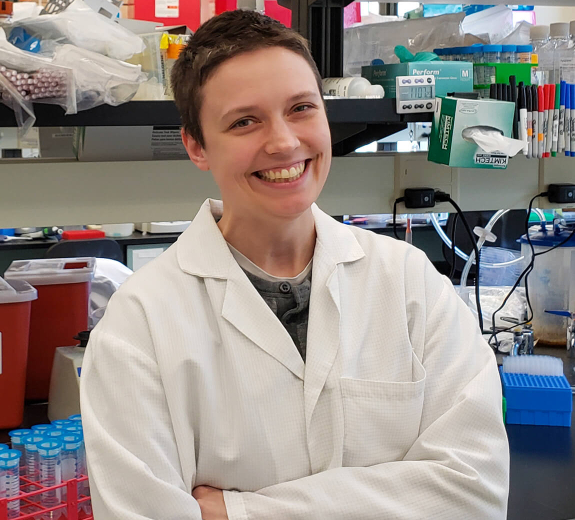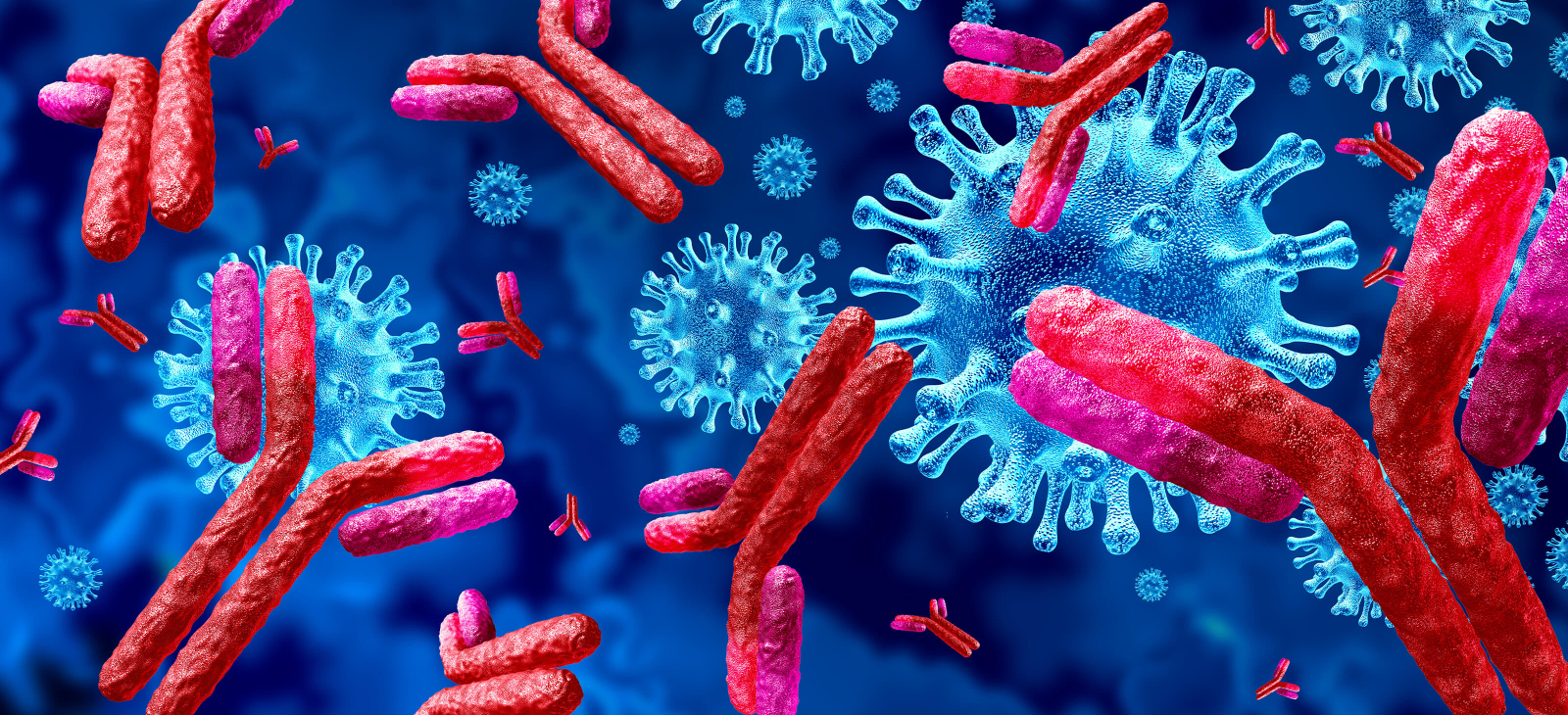“There’s still so much we don’t understand about autoimmune diseases,” Hayley says. “Learning more about the underlying cells and processes in conditions like lupus can help us better understand the disease overall.”
Why Antibodies Attack in Lupus
Hayley’s research focuses on tiny proteins called antibodies, which recognize and tag bits of virus DNA. These tags tell other cells to start attacking. But in lupus, antibodies tag bits of your own DNA, and the immune system starts responding as if it were a virus.
Hayley is zeroing in on two types of antibodies called immunoglobulin A (IgA) and immunoglobulin G (IgG). Scientists already know that IgG plays a role in lupus. Hayley wants to know: Does IgA play a role in starting the disease? Does it make disease worse? And do IgA and IgG together create even more inflammation?
“You could think of IgA as firefighters and IgG as EMTs,” Hayley says. “They’re both called in when there’s a fire, but they have different jobs. I’m working to understand why these antibodies show up when there’s no fire.”
Using donated blood samples from people with lupus, Hayley created a model that allows her to study IgA individually and IgA and IgG together. So far, she has found that having both IgA and IgG leads to more inflammation. She’ll continue to collect data throughout the year and as she finishes her PhD.
Different Forms of Lupus
Hayley is also interested in how different antibody responses may lead to different manifestations of lupus.
“There’s so much diversity in lupus, it could probably be broken down further into different diseases,” Hayley says. “Better understanding the cellular mechanisms could help further categorize people and eventually lead to better, more personalized lupus treatments.”
Donor Samples Fuel Research
Hayley plans to continue autoimmune disease research after her PhD. She has enjoyed getting firsthand experience and mentorship with Jessica Hamerman, PhD, and her team. Conducting fundamental research with a strong focus on human disease and easy access to human samples have been some of Hayley’s favorite parts of working at BRI.
“I just want to thank all of the people who donate samples to our research. We really couldn’t do this without them,” she says. “Oftentimes, I’ll email the research team and ask if they can bring people back in to give additional samples. And most of the time people say yes — and that’s really incredible.”






